![]()
[ web site index ]
| Stoke-on-Trent |
|
| | Tunstall | Burslem | Hanley | Stoke | Fenton | Longton | Six Towns | | |
|
[ web site index ] |
|
What was new in 2009?
this shows significant sections added during 2009 - also see see current 'What's New?' |
| also see what was new in: 2000 | 2001 | 2002 | 2003 | 2004 | 2005 | 2006 | 2007 | 2008
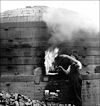 14 November 2009 |
index of
Brickworks and Tileries of
the North Staffordshire Potteries district
- Stoke-on-Trent is well supplied with beds of heavy clay suitable for making bricks. These included Etruria marl and Old Mill marl, together with that associated with the coal seams:- Black Band , and the Middle and Lower Coal measures. |
 8 September 2009 |
'Villages of Vision' - what of the planned settlement in the Potteries? ...... there have been some developments that – at their time – have been of importance and influence locally and in some instances farther a field. |
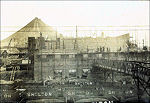 9 August 2009 |
Photographs of additional new plant built in 1922 at Shelton Iron & Steel Works - including new boilers, a new foundry, additional by-product plant, and extensions to the washery. |
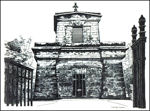 17 July 2009 |
'Guardians of the Dead'
- There is only place that
we are all going; Death is the one great leveller and has no respect
for money, class or status, and it is the only time of life where
both kings and beggars are equal. |
 3 June 2009 |
Methodism in the Potteries As people flooded into the new towns of Burslem, Hanley and Lane End (now Longton), moral conditions were very poor indeed. Drunkenness was common, even among children; profanity and vulgarity were heard everywhere; gambling, bull-baiting and cock-fighting were normal pastimes; the annual holiday weeks (called "Wakes") proved to be occasions of every sort of immorality..... But help was at hand! As Marjorie Cruikshank continues, "it was Dissent in its various forms which appealed to the potters, colliers and iron workers. Foremost among all these Dissenting bodies were the Methodists, who were led by John Wesley. |
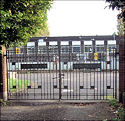 17 May 2009 |
Doors, Gates and Windows Explore the buildings of Stoke-on-Trent and the wider Potteries conurbation - this section will be added to regularly - so pop back and see what's new. |
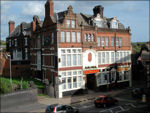 20 April, 4 May 2009 |
The absolute centre of the Beer-muder Triangle was the George and Dragon pub popularly known as ‘th Owd ‘Ut’. Why? I’ll leave it to others to tell you why.” Longton’s most prominent public house is the Crown Hotel. “It was described in trade directories as a favourite rendezvous of commercial gentlemen and Americans and feted as popular with families. Originally named the Crown and Anchor it was built in 1887 on the site of another long forgotten pub, the White Horse.”
Look around Newcastle and you get the feeling of strong tradition
particularly in the pubs that stand among ubiquitous Georgian
architecture. But it is the closed pubs in other uses that show the
true heritage of Newcastle. Take for instance the
Golden Ball in
Bridge Street. |
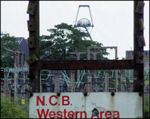 13 April 2009 |
This year sees the
25th anniversary of the start of the Miners’ Strike,
which ultimately led to the demise of the coal mining industry as a
major powerhouse in this country, the fall out of which coalfield
communities are still dealing with to this day. |
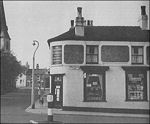 11 April 2009 |
A weekly pub crawl |
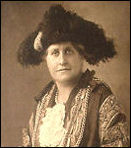 25 Mar 2009 |
In 1918, with the war over, Parliament agreed to give the vote to women who were over 30. But it was not until 1928 that the law granted women the right to vote on the same terms as men. The first woman to take a seat in the House of Commons was Lady Nancy Astor in 1919. In that same year Stoke-on-Trent admitted its first woman councillor, Florence Farmer. |
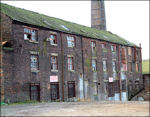 12 Mar 2009 |
Renew? &
Regeneration! - Stoke-on-Trent |
 9 Mar 2009 |
Old
Pubs of the Potteries |
|
3 Mar 2009 |
Clerk met his match as police chief laid down law - [Eustace Joy & Frank Bunn] |
 28 Feb 2009 |
"Machines for Living in"
|
|
1 Feb 2009 |
Leonard Grimwade - the federation spin-doctor
|
 15 Feb 2009 |
The Darwin - Wedgwood family was a prominent English family, descended from Erasmus Darwin and Josiah Wedgwood I, the most notable member of which was Charles Darwin. The family contained at least ten Fellows of the Royal Society and several artists and poets.
|
|
11 Feb 2009 |
Cecil Wedgwood - the first mayor after federation He was second-in-command of the 8th North Staffordshire Regiment in France. However on the third day of the Battle of the Somme in 1916 he was killed. Legend has it that his last words were, ‘Carry on the Potters!’ |
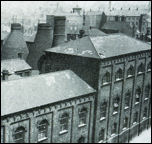 6 Feb 2009 |
New section -
pottery factories of the week.
From the 18th century until the 1960s,
bottle ovens were the dominating feature of the Staffordshire Potteries.
There were over two thousand of them standing at any one time and they
could be seen everywhere one looked. |
|
26 Jan 2009 19 Jan 2009 |
Theatre legacy of Mother Town's civic bid
- [Sydney Malkin] -
Malkin showed his rebellious nature at the beginning of the 20th
century when all the talk was of Federation. The Sentinel was full of it
and Arnold Bennett wrote about its implications in his novel The Old
Wives’ Tale published shortly before the event in 1910. Accountant was breath of fresh air - [Frederick Geen] - Geen was a committed anti full-federationist, preferring a civic partnership with Stoke, Fenton and Longton instead. But his early proposals fizzled out through lack of support. |
|
13 Jan 2009 |
City is born after
historic act The first of the federation 'walks' - people, places and buildings connected with federation. |
|
5 Jan 2009 |
The completion of the walk along the Potteries Loop Line - Tinkersclough, Shelton Works & Etruria |
 4 Jan 2009 |
Federation of the six towns of the North Staffordshire Potteries took place on March 31st 1910. The county borough of Hanley, the municipal boroughs of Burslem, Longton and Stoke together with the urban districts of Tunstall and Fenton now formed a single county borough of Stoke-on-Trent.
|